As pupils Danny and I visited the Federal Parliament of Belgium. On our travels, we visited many parliament buildings such as the Houses of Parliament in London (United Kingdom), the Bundestag in Berlin (Germany) the Parliament of Victoria in Melbourne (Australia), the Old and New Parliament House in Canberra, the Palace of the Parliament in Bucharest (Romania), Greece‘s Old Parliament House and now a museum in Athens, the Parliament Building in Budapest (Hungary) and the Casa de la Vall, Andorra‘s Parliament House. But never did we visit the European Parliament, while it’s no nearby in Brussels. Until August 2023 that is.
Nestled within the heart of the European Quarter, the European Parliament building stands as a testament to the ideals of unity, democracy, and collaboration that define the European Union (EU). As a hub of political discourse and decision-making, this iconic structure plays a central role in the operation of the EU, serving as a tangible representation of the shared values and aspirations of its member states.
The complex is not the official seat of the European Parliament, which is the Louise Weiss building in Strasbourg in France, but as most of the other institutions of the European Union are in Brussels, the Parliament built the Brussels complex to be closer to its activities. A majority of the Parliament’s work is now geared to its Brussels site, but it is legally bound to keep Strasbourg as its official home.
Architecture
The Brussels branch is known as the Espace Léopold. The complex consists of the Paul-Henri Spaak building, which houses the debating chamber, the Altiero Spinelli building, two new buildings known as the Willy Brandt and József Antall buildings and a newly refurbished building which was the former entrance to the Brussels-Luxembourg Railway Station.
Between the Spinelli buildings and the Brandt-Antall buildings, which are connected by the circular Konrad Adenauer footbridge, runs the esplanade of the European Parliament (or the ‘Mall‘).
Espace Léopold is a complex of buildings built from 1989 to 2004 in postmodern style. The architect is Michel Boucquillon who was 26 years old in 1988.
The other buildings facing the Paul-Henri Spaak building and the esplanade were designed by the Atelier Espace Léopold in the early 1990s.
Michel Boucquillon designed the building in the oval shape, a symbol of union. The facade is intended to reflect the essential notions of transparency, democracy and proximity to citizens. Parliamentarians enter the axis of the building while spectators, including the press, enter laterally.
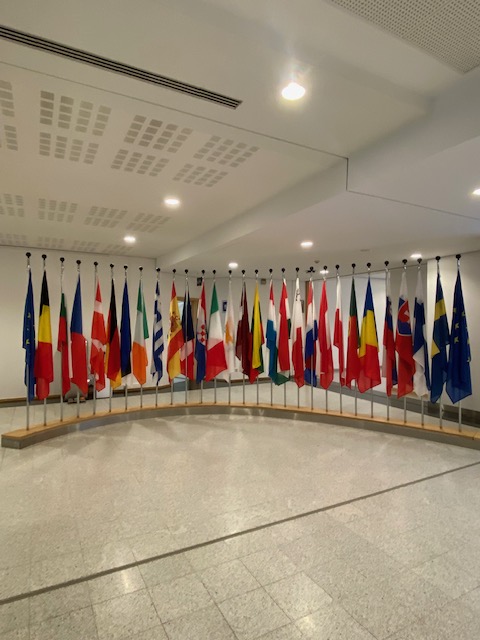

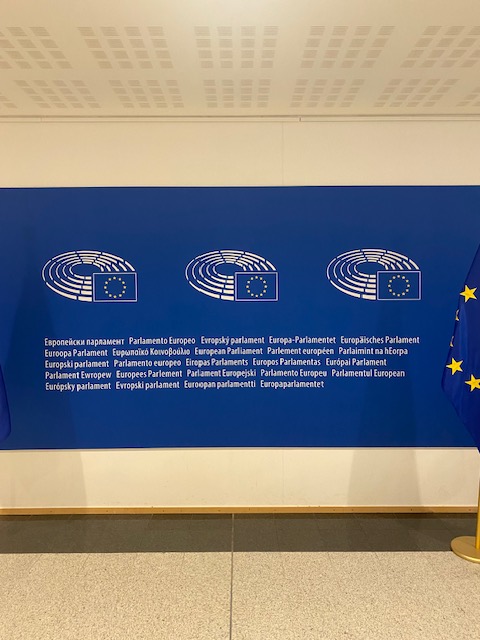
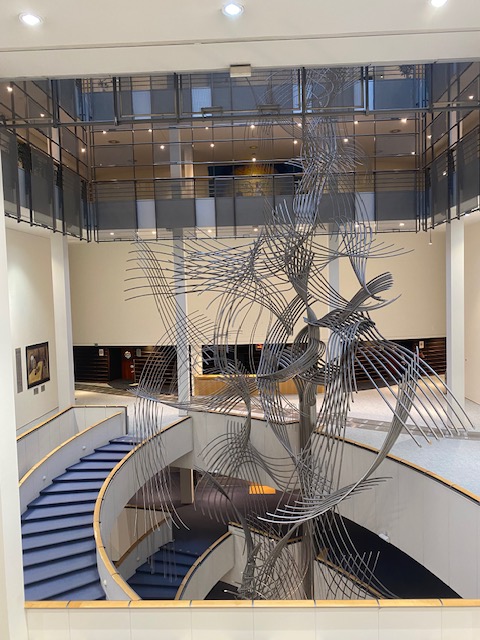


Hemicycle
Boucquillon designed the building in the oval shape, a symbol of union. The facade is intended conceives the hall of the hemicycle as a vast working space. The aim was to provide a sober, comfortable and human-scale environment that encourages exchange and dialogue.
The focus is on the space of the now 705 parliamentarians by visually erasing the 532 seats in the gallery. The latter is totally black in order to be absent. The atrium is the lung of the building, its role is to allow light or “truth” to flow to the level of the hemicycle.
It was therefore essential to imagine a wall and a material that allowed light to flow down. The material had to be transparent to the eye. The woven stainless steel cloth fulfilled this role well. This material had never been used for architectural purposes before.
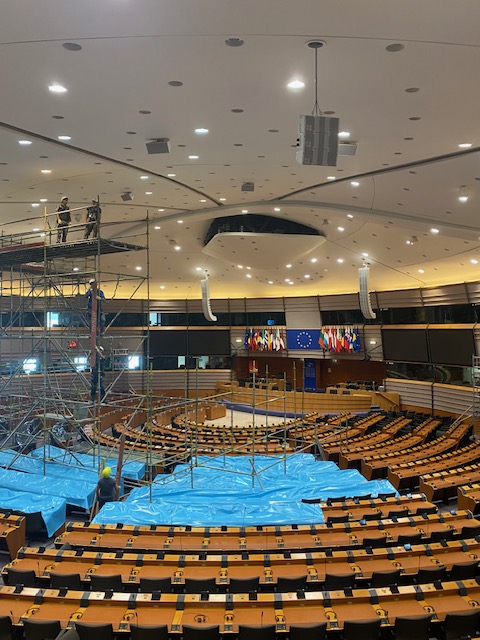

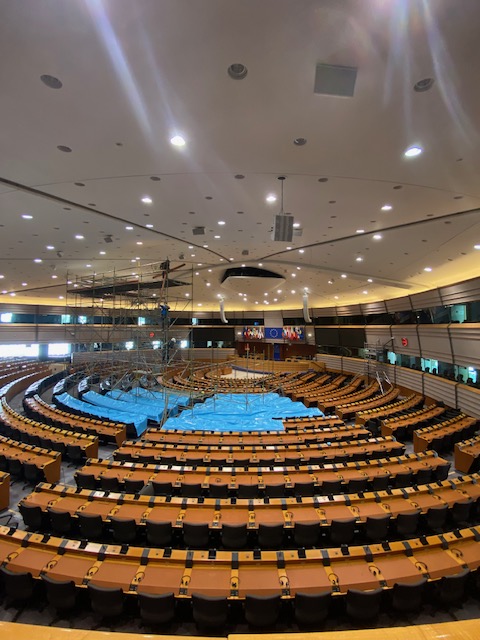
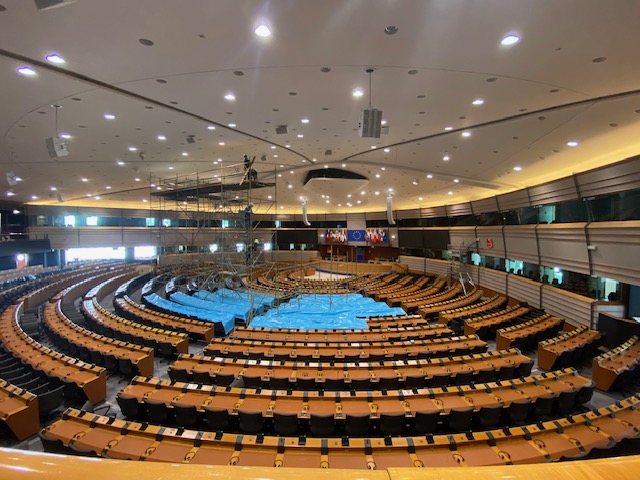
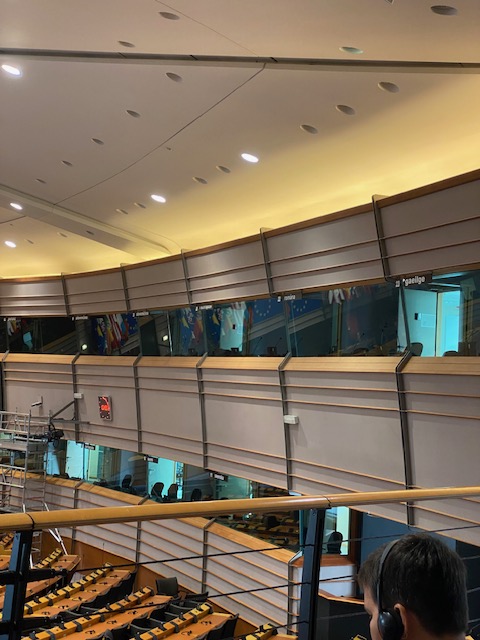
A visit
A visit of the European Parliament is free but you need to book in advance, although we saw some tourists from Portugal present themselves without pre-booked ticket. When booking, you need to provide an identity card or passport number so bring that document along.
After you cleared an airport security checkpoint, you collect your audioguide and leave bags in the cloakroom.
Video killed the tour guide
The audiotour starts on ground floor with an introduction. You’re then invited to go to the fourth flour where you go through a corridor with art from all over Europe and you gain access to the public gallery seats.
The audioguide then becomes a videoguide with an extensive talk about the hemicycle and the workings of the European Parliament. The stakeholders repeatedly invite you to vote next time.
Actually, the European Elections are soon, around 9 May 2024! Except in Greece and Belgium, turning up to vote is not mandatory.
Although the information was uhm informative, I don’t remember hearing about the building, its architect or genesis. I had to ask ChatGPT, which confused it with Strasbourg and turn to Wikipedia. If you wonder, I wrote this the evening after the visit.
So?
To be honest, the visit is not marketed as visiting the European Parliament but as the European Parliament Hemicycle. That’s not the same.
The European Parliament building is perhaps inspired from the outside, but on the inside looks and is an uninspired, dated office building. Designed not to offend. Bland.
I’d say we were underwhelmed but we were not expecting that much. We were inside for some 45 minutes only.
Exploring Brussels
- RIDE & DINE | Brussels Tram Experience.
- REVIEW | M-Gallery Le Louise in Brussels.
- Inside the Royal Palace of Brussels.
- Brussels’ Atomium.
- REVIEW | Orient-Express exhibition at Train World, Brussels’ railway museum.
- REVIEW | Louis de Funès exhibition at Cinéma Palace Brussels.
- REVIEW | David Hockney double exhibition at Bozar Brussels’ arts museum.
- The orange world of Design Museum Brussels.
- AfricaMuseum in Tervuren near Brussels.
- Brussels Planetarium.
- Brussels’ Gare Maritime.
- REVIEW | Comics Art Museum Brussels by the Belgian Comic Strips Center.
- Brussels’ Pannenhuis Park and L28 Park.
- Brussels’ Senne Park.
- The Hotel. Brussels.
- REVIEW | ‘Royals & Trains’ exhibition at Train World in Brussels.
- Ducal and Imperial Palace of Coudenberg in Brussels.
- MIMA – Millennium Iconoclast Museum of Art in Brussels.
- Villa Empain in Brussels.
- Pullman Brussels Centre Midi.
- Autoworld automobile museum in Brussels.
- Royal Museum of the Armed Forces and Military History in Brussels, Belgium.
- Royal Military Museum, War Heritage Institute, Brussels, Belgium.
- REVIEW | Thalys Lounge at Brussels South/Midi station.
- PHOTOS | Train World railway museum in Brussels.
- Josaphat Park and residential Schaerbeek.
- BRUSSELS | BELvue Museum of Belgium.

7 Comments Add yours